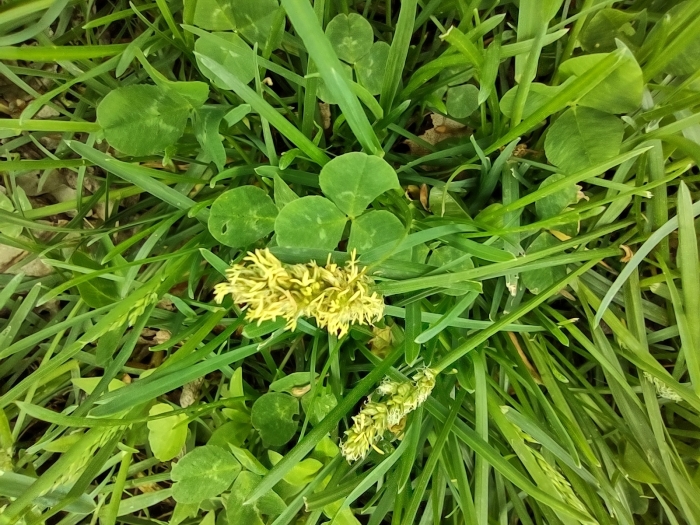Sand Sedge
(Carex muehlenbergii)
Sand Sedge (Carex muehlenbergii)
/
/

© Jennifer Boeyink Hartley
CC BY 4.0
Image By:
© Jennifer Boeyink Hartley
Recorded By:
Copyright:
CC BY 4.0
Copyright Notice:
Photo by: © Jennifer Boeyink Hartley | License Type: CC BY 4.0 | License URL: http://creativecommons.org/licenses/by/4.0/ | Uploader: jabhartley | Publisher: iNaturalist |

























Estimated Native Range
Summary
Carex muehlenbergii, commonly known as Sand Sedge or Muhlenberg’s Sedge, is a perennial herbaceous plant that is part of the sedge family. It is typically found in open sandy habitats, including dry fields, dunes, and banks, as well as in the understory of oak and aspen forests in North America, particularly in the central and eastern United States. This sedge often forms tufted clumps and reaches a height of 8-35 inches. Its narrow, grass-like leaves contribute to its fine-textured appearance. The inflorescences consist of 3-10 flower spikes, which can be green, yellow, or brown, and are more subtle than showy, blooming from late spring to mid-summer.
Sand Sedge is valued for its adaptability to poor, dry soils and its use in restoration projects and naturalized areas. It is often utilized in xeriscaping due to its low water requirements and is suitable for erosion control on sandy banks. In cultivation, it prefers full sun to part shade and well-drained sandy soils. While it is generally low-maintenance, it can be susceptible to root rot in poorly drained conditions. There are no widely known cultivars of this species in the horticultural trade, and it is not typically associated with significant diseases or aggressive roots. However, its conservation status should be considered when harvesting from the wild, as it is listed as threatened in Maine and Vermont.CC BY-SA 4.0
Sand Sedge is valued for its adaptability to poor, dry soils and its use in restoration projects and naturalized areas. It is often utilized in xeriscaping due to its low water requirements and is suitable for erosion control on sandy banks. In cultivation, it prefers full sun to part shade and well-drained sandy soils. While it is generally low-maintenance, it can be susceptible to root rot in poorly drained conditions. There are no widely known cultivars of this species in the horticultural trade, and it is not typically associated with significant diseases or aggressive roots. However, its conservation status should be considered when harvesting from the wild, as it is listed as threatened in Maine and Vermont.CC BY-SA 4.0
Plant Description
- Plant Type: Grass
- Height: 1-3 feet
- Width: 0.5-1.5 feet
- Growth Rate: Moderate
- Flower Color: N/A
- Flowering Season: Spring, Summer
- Leaf Retention: Semi-deciduous
Growth Requirements
- Sun: Full Sun, Part Shade
- Water: Medium
- Drainage: Medium, Fast
Common Uses
Bank Stabilization, Bird Garden, Border Plant, Deer Resistant, Drought Tolerant, Erosion Control, Low Maintenance, Rabbit Resistant
Natural Habitat
Open sandy habitats, including dry fields, dunes, banks, and the understory of oak and aspen forests
Other Names
Common Names: Sand Sedge, Muhlenberg’s Bracted Sedge, Sand Bracted Sedge
Scientific Names: , Carex muehlenbergii, Vignea muhlenbergii,
GBIF Accepted Name: